Avi's Blog, page 12
August 15, 2023
Summer Blog Series: C.M. Surrisi
From Avi: As I did last summer, I’ve invited 13 admired middle grade authors to write for my blog for the next three months. I hope you’ll tune in each Tuesday to see who has answered these three questions. You should have a list of terrific books to read and share and read aloud by the end of the summer … along with new authors to follow!
Your favorite book on writing: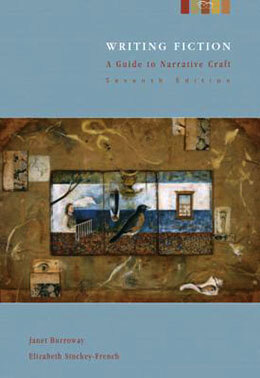 I am some combination of a plotter and a pantser. Sometimes, I am all about structure, plot points, beats, rising action, and all the Freytag’s Pyramid elements. Other times, I am feeling my way through the characters, their trials, tribulations, reactions, and change. I read through a manuscript from the beginning over and over and tweak it to see if it is holding together with the new bits.
I am some combination of a plotter and a pantser. Sometimes, I am all about structure, plot points, beats, rising action, and all the Freytag’s Pyramid elements. Other times, I am feeling my way through the characters, their trials, tribulations, reactions, and change. I read through a manuscript from the beginning over and over and tweak it to see if it is holding together with the new bits.
Over the years, the craft book that has endured for me is Writing Fiction: A Guide to Narrative Craft by Janet Burroway, Elizabeth Stuckey-French.
I used this book extensively during my MFA studies and cited it in my thesis because, unlike any other craft books, it doesn’t just offer an axiom and or an example, it explores why the example demonstrates the principle. For example, when people tell you to “use active verbs,” they often say, “because they keep the reader engaged.” The Burroway book will go one step further to explain why they keep you engaged. By the way, it’s because active verbs stimulate a different part of the brain than do nouns and non-active verbs. Active verbs register in the brain where the action would be felt if you took it. So, this book provides practical writing techniques, concrete examples, and deeper explanation. It’s also not text-bookish.
Reading aloud from my books:I have always recommended reading my novels out loud because they are suspenseful. However, since I have written The Bones of Birka: Unraveling the Mystery of a Female Viking Warrior, I have come to appreciate that non-fiction can be a heck of a suspenseful read. The book is packed with exciting information surrounding a controversial archaeological find, laced with history and science that is fun to learn. Plus, at almost every page turn, it raises good questions for discussion.
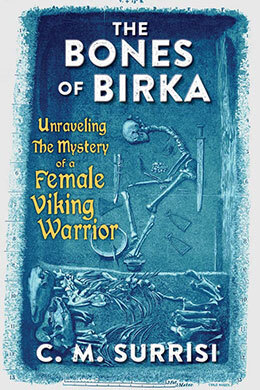 Where do you write most often?
Where do you write most often? I have a messy desk for writing business, and when I am going through copy editing on non-fiction it takes over the entire dining room table. But when I compose, I choose a serene and Zenlike place. That is my living room with its big round window onto the universe.
 Particulars
Particulars 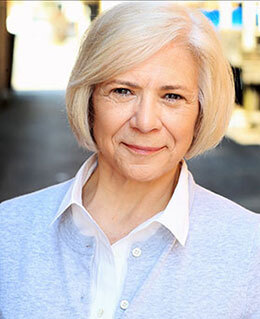
C.M. Surrisi
Home Twitter Instagram Facebook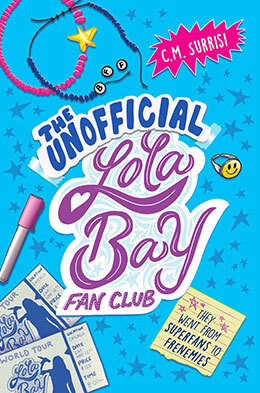
About Brian’s recent book, Carrie Firestone, author of Dress Coded wrote, “A brilliant portrayal of how easy it is to get sucked into a toxic friendship and how painful the consequences can be. It’s an emotionally riveting swim through dark waters that ends with a long, deep breath and a poignant reminder: There’s always a way out.”
August 8, 2023
Summer Blog Series: Brian Floca
From Avi: As I did last summer, I’ve invited 13 admired middle grade authors to write for my blog for the next three months. I hope you’ll tune in each Tuesday to see who has answered these three questions. You should have a list of terrific books to read and share and read aloud by the end of the summer … along with new authors to follow!
Your favorite book on writing: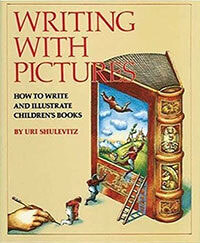 My favorite book on writing, as my studio mates may have heard too often, is Uri Shulevitz’s Writing with Pictures. It’s addressed particularly toward writers and illustrators of picture books. Shulevitz is astute on questions of story and form — on action vs. story, on how a reader relates to a character, on progression, on pacing, on the interdependence of image and text, and on endings. (“A good ending should add focus and significance to the unfolding that has preceded it.”) His writing is clear, direct, at times a touch hard-nosed. The point of writing is not to try to make yourself happy. (“When working on your first book, you may ask: Am I happy with the book? Am I happy with the illustrations? These seemingly innocent questions actually shift the importance from the book and the illustrations to yourself. A happy book will inevitably make a happy author. Therefore ask: Is the book happy? Are the illustrations happy?”) The point is not even, or at least not always, to imagine how you might make your reader happy. (“Sentimentality, unfortunately, is no help; in fact it is a hindrance. Sentimentality does not replace the craft that is essential in making good children’s books. Your first obligation is to the book, not the audience.”) The task is to understand and honor the story you are trying to tell. Only then, maybe, will you have a shot at pleasing both yourself and your reader.
My favorite book on writing, as my studio mates may have heard too often, is Uri Shulevitz’s Writing with Pictures. It’s addressed particularly toward writers and illustrators of picture books. Shulevitz is astute on questions of story and form — on action vs. story, on how a reader relates to a character, on progression, on pacing, on the interdependence of image and text, and on endings. (“A good ending should add focus and significance to the unfolding that has preceded it.”) His writing is clear, direct, at times a touch hard-nosed. The point of writing is not to try to make yourself happy. (“When working on your first book, you may ask: Am I happy with the book? Am I happy with the illustrations? These seemingly innocent questions actually shift the importance from the book and the illustrations to yourself. A happy book will inevitably make a happy author. Therefore ask: Is the book happy? Are the illustrations happy?”) The point is not even, or at least not always, to imagine how you might make your reader happy. (“Sentimentality, unfortunately, is no help; in fact it is a hindrance. Sentimentality does not replace the craft that is essential in making good children’s books. Your first obligation is to the book, not the audience.”) The task is to understand and honor the story you are trying to tell. Only then, maybe, will you have a shot at pleasing both yourself and your reader.
I read my picture books aloud regularly as I write them, again and again, revising as I go, hoping to find the words and rhythm that work best for story and reader. Which of my books I would recommend most changes depending on my mood, but today I will say Moonshot: The Flight of Apollo 11.
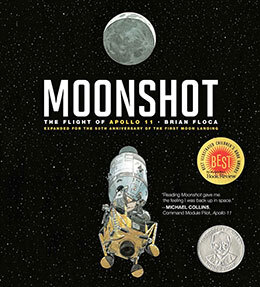 Where do you write most often?
Where do you write most often? Most writing starts on whatever scrap of paper I have at hand, as an idea or phrase enters my head. It may then move to a writing pad on the table in my apartment or, in an effort to separate myself from the distractions of home, to a quiet coffee shop. When I’m ready to start breaking the text down page by page I enter it into a layout program, InDesign, on my computer, so I can start to see and experience the story somewhat as it will appear in book form. Much revising ensues. Most of that happens in the studio I share in the Gowanus neighborhood of Brooklyn with five other picture book authors and illustrators, Sophie Blackall, Johnny Marciano, Doug Salati, Dasha Tolstikova, and Rowboat Watkins, each of whom will probably be asked to lend an eye at one point or another. After a lot of reworking, that layout will get printed and carted back to the apartment or coffee shop for revision and marking up, and then the whole thing repeats. I’m not a quick writer.
 Particulars
Particulars 
Brian Floca
Home Twitter Instagram Facebook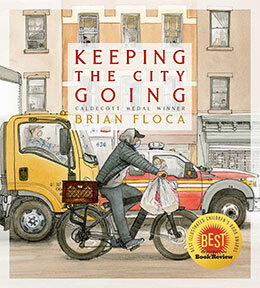
About Brian’s recent book, Publishers Weekly said in a starred review, “With his signature affection for architecture and keen sense of urban space, Caldecott Medalist Floca pays tribute to the frontline workers helping to make New York City run during the pandemic. Floca brings precision and expert draftsmanship to renderings of working vehicles, centering the heroes working to get supplies out and save lives, and to the equipment that helps them do it.”
August 1, 2023
Summer Blog Series: Sarah Suk
From Avi: As I did last summer, I’ve invited 13 admired middle grade authors to write for my blog for the next three months. I hope you’ll tune in each Tuesday to see who has answered these three questions. You should have a list of terrific books to read and share and read aloud by the end of the summer … along with new authors to follow!
Your favorite book on writing:Bird by Bird: Some Instructions on Writing and Life by Anne Lamott. It’s funny, thoughtful, and wise, and helps me feel more present to both my writing and the world.
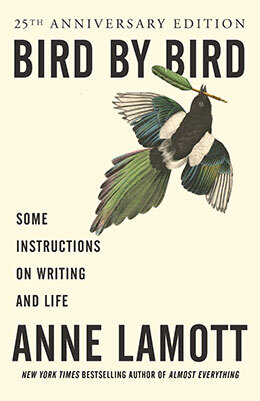 Reading aloud from my books:
Reading aloud from my books: Troublemaker by John Cho (on which I was a co-writer). It’s action packed and not too long, and if you’re reading aloud with someone, it presents many opportunities for discussion.
 Where do you write most often?
Where do you write most often? These days, in a corner of my kitchen table where my apartment gets a lot of light.
 Particulars
Particulars 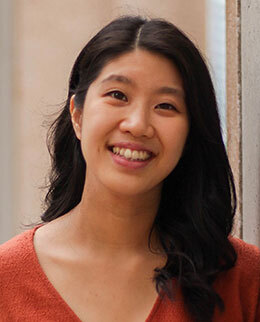
Sarah Suk
Home Twitter Instagram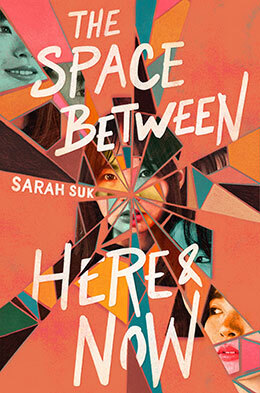
Stay tuned for Sarah’s next book, The Space Between, which launches on October 31, 2023. Seventeen-year-old Aimee Roh has Sensory Time Warp Syndrome, a rare condition that causes her to time travel to a moment in her life when she smells something linked to that memory. Her dad is convinced she’ll simply grow out of it if she tries hard enough, but Aimee’s fear of vanishing at random has kept her from living a normal life.
July 25, 2023
Summer Blog Series: Mark Siegel
From Avi: As I did last summer, I’ve invited 13 admired middle grade authors to write for my blog for the next three months. I hope you’ll tune in each Tuesday to see who has answered these three questions. You should have a list of terrific books to read and share and read aloud by the end of the summer … along with new authors to follow!
Your favorite book on writing:My current favorite book on writing is Land of the Dead: Lessons from the Underworld on Storytelling and Living by Brian McDonald and Toby Cypress.
 Reading aloud from my books:
Reading aloud from my books: A book of mine that benefits most from reading out loud is called Moving House. My now-teenaged children still say one of the lines from it whenever they come home: “Hello home! We’re home, home!”
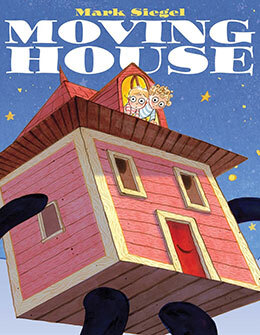 Where do you write most often?
Where do you write most often? Here’s where I write in the early mornings. Currently a prose project which I’m drafting in long-hand. I heard Neil Gaiman does that, and decided to try it. It’s marvelous working away from a screen, for one thing.

Here’s where I’m drawing these days. Current project on the Cintiq, which I really enjoy working on, even though I miss my little watercolor field kit.
 Particulars
Particulars 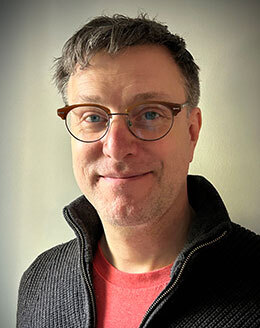
Mark Siegel
For more on my book projects, visit marksiegelbooks.com.
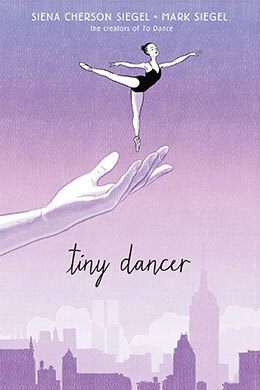
We invite you to read this wonderful graphic novel, illustrated by Mark Siegel, and written by Siena Cherson Siegel, Mark’s spouse. “Beautiful descriptions of different dancers and performances offer an inside look at the nuances of ballet and work in tandem with the striking black lined and purple shaded illustrations that capture the movement of the dancers … A notable addition to graphic novel collections …” (SLJ)
July 18, 2023
Summer Blog Series: Bruce Coville
From Avi: As I did last summer, I’ve invited 13 admired middle grade authors to write for my blog for the next three months. I hope you’ll tune in each Tuesday to see who has answered these three questions. You should have a list of terrific books to read and share and read aloud by the end of the summer … along with new authors to follow!
Your favorite book on writing:The book on writing that I most frequently recommend to beginners is Story by Robert McKee. Though it’s based on McKee’s famous three-day workshop for screenwriters, I have found it enormously valuable for my own work in prose. I first took the course (I’ve taken it twice!) when I had already been publishing for over a dozen years, and for the first few hours I found myself thinking, “Why am I here, I already know all this!” By the end of the weekend I had taken forty pages of notes … and started applying some of the things he had taught when I went back to work on Monday morning! And I’m still using them. McKee’s thoughts about creating a narrative are universal, profound, and easily applied.
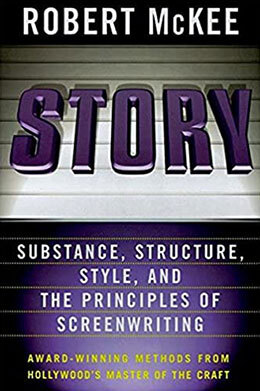 Reading aloud from my books:
Reading aloud from my books: During my years as a classroom teacher, reading aloud to my students was my favorite part of the day. Because of that, I have always written my own books with the conscious hope and intent that they would be fun for parents and teachers to read out loud … which means that they should flow easily and smoothly when someone was doing so. Which is why I always read my works in progress out loud to myself, in an attempt to avoid ungainly prose or phrases that would make the tongue tangle.
My personal choice for which one that is most fun to read aloud has to be Goblins in the Castle … a choice that seems to be echoed by many teachers, as I have wonderful letters from educators about how they read it every year. Part of what makes it so much fun to read aloud is that it has vivid and wacky characters that cry out for the lector to create voices for. And let’s face it … creating voices is one of the great joys of reading aloud to kids!
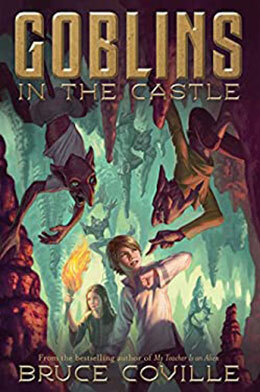 Where do you write most often?
Where do you write most often? 
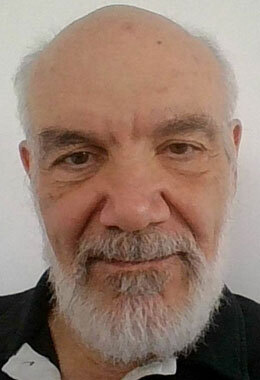
Bruce Coville
Home Facebook Instagram TwitterReader be warned: he has opinions (lots of them) and is not afraid to voice them!
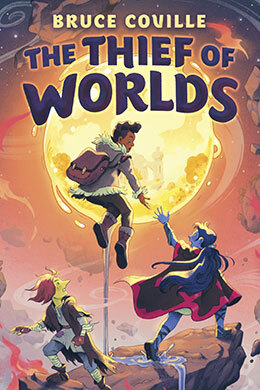
Bruce’s most recent book is a classic epic fantasy that will enthrall readers while it reminds them of the magic that lies in friendship and that friendship just might have the power to save the world.
July 11, 2023
Summer Blog Series: Cathy Camper
From Avi: As I did last summer, I’ve invited 13 admired middle grade authors to write for my blog for the next three months. I hope you’ll tune in each Tuesday to see who has answered these three questions. You should have a list of terrific books to read and share and read aloud by the end of the summer … along with new authors to follow!
Your favorite book on writing:This is not a book about the craft or the business of writing, but there’s plenty of material about that.
As a young writer, I worried about if I was a real writer. Was I writing the right things, the correct number of words or pages a day? Becoming a Writer by Dorothea Brande is one of the only books I know that describes how writers write, and one that verified my experience. Brande talks about first surrounding yourself with stimulus for writing, doing research, reading other writer’s works, visiting locales for your book. Then she mentions an incubation period — purposely not focusing on the work, doing something bland and methodical instead, what she calls having “a floor to scrub.” During this monotonous activity, ideas begin to pop up, seemingly from nowhere — and that is the time to sit down and write. Written in 1934, before left and right brain theories, and what we know now about the subconscious, her book describes both how writers use their conscious and subconscious brains, and the importance of daydreaming and doing monotonous action to nurture writing.
 Reading aloud from my books:
Reading aloud from my books: Comics and graphic novels don’t often read well aloud because the text is too intertwined with the illustrations. But when I first started writing Lowriders in Space, I wasn’t sure if it would be a graphic novel or a picture book, so I wrote a narration that would work for both, and that read well aloud. For a comic, of course it’s best to share the art too (use a projector if you’re reading in a classroom). But as a librarian, I’ve observed many parents reading Lowriders in Space to their kids, even preschoolers, just like it was a picture book. For younger kids, I also recommend Ten Ways to Hear Snow, because it’s fun to make all the different snow noises, and to invent some of your own.
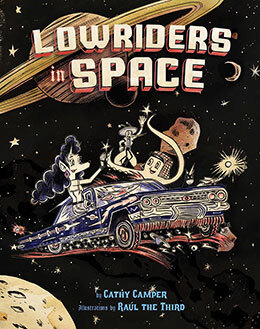
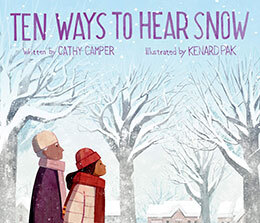 Where do you write most often?
Where do you write most often? 
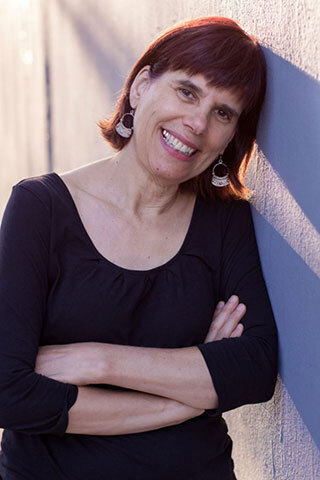
Cathy Camper
Home Facebook Instagram Twitter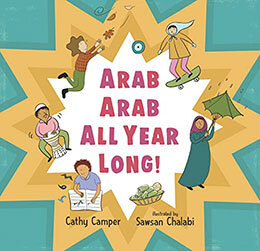
Cathy’s most recent book celebrates the beauty and diversity of life in the Arab diaspora throughout the year.
July 4, 2023
Summer Blog Series: Jerdine Nolen
From Avi: As I did last summer, I’ve invited 13 admired middle grade authors to write for my blog for the next three months. I hope you’ll tune in each Tuesday to see who has answered these three questions. You should have a list of terrific books to read and share and read aloud by the end of the summer … along with new authors to follow!
Your favorite book on writing:Love, love, love Natalie Goldberg’s book, Writing Down the Bones: Freeing the Writer Within.
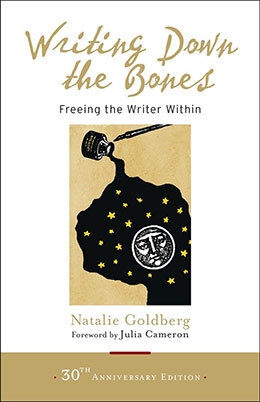 Reading aloud from my books:
Reading aloud from my books: Harvey Potter’s Balloon Farm is the most requested read aloud. Second to that is Raising Dragons and then, Thunder Rose
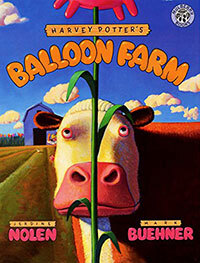
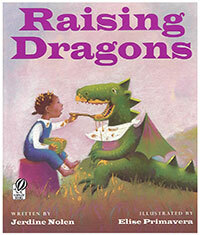
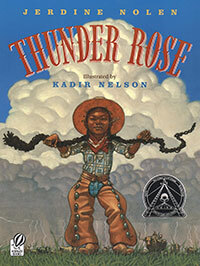 Where do you write most often?
Where do you write most often? My writing space is very much in transition. It is being moved to a new location.

In the meantime, I can show you what it looks like while its contents – papers, pencils, pens, books, files, glasses, coffee cups, slippers, sweaters are right now all being packed up into boxes. My desk, considerably much neater than when I am working there. Sparse, really, hardly recognizable.

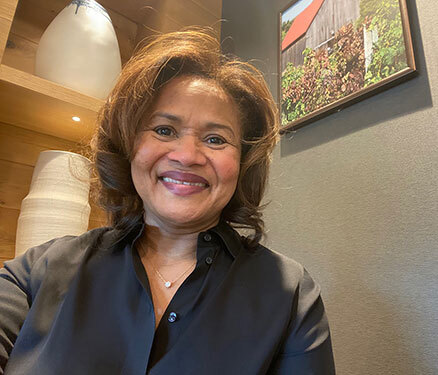
Jerdine Nolen
Home Facebook Instagram Twitter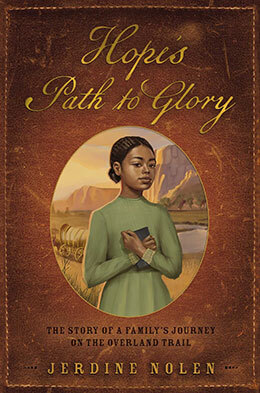
Jerdine’s most recent middle grade novel, Hope’s Path to Glory: The Story of a Family’s Journey on the Overland Trail
June 27, 2023
Summer Blog Series: Pamela S. Turner
From Avi: As I did last summer, I’ve invited 13 admired middle grade authors to write for my blog for the next three months. I hope you’ll tune in each Tuesday to see who has answered these three questions. You should have a list of terrific books to read and share and read aloud by the end of the summer … along with new authors to follow!
Your favorite book on writing:I love Writing for Story: Craft Secrets of Dramatic Nonfiction by a Two-Time Pulitzer Prize Winner by Jon Franklin. You don’t have to be a nonfiction writer to get a treasure chest of knowledge out of Franklin’s book, because narrative nonfiction uses the same tricks as fiction. Franklin lays out his technique and then provides annotated versions of two of his stories, including the Pulitzer-prize-winning “Mrs. Kelly’s Monster.” In sentence-by-sentence detail he shows how he created a vivid, emotionally charged narrative. For example, Franklin explains why he uses a rounded-off time (“6:30 am”) at the beginning of this story about a neurosurgeon at work, later switching to more specific times (“10:01 am”) as the tempo of the story shifts into high gear. Hats off to Franklin, who also points out a couple of sentences he wished he’d written differently. Now that’s a writer.
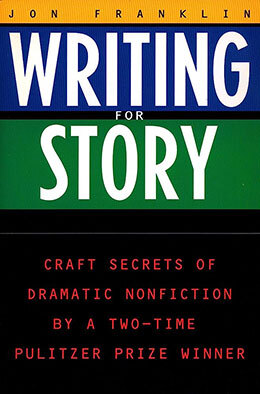 Reading aloud from my books:
Reading aloud from my books: The book of mine I would recommend reading out loud is Samurai Rising: The Epic Life of Minamoto Yoshitsune. It’s a biography of a real-life samurai who lived like an action hero. There’s a tongue-in-cheek warning on the back cover: “Very few people in this story die of natural causes.” For some readers it’s an actual warning, but for others I suspect it’s catnip. I’m particularly proud of the cliffhangers at the end of the chapters. Enjoy!
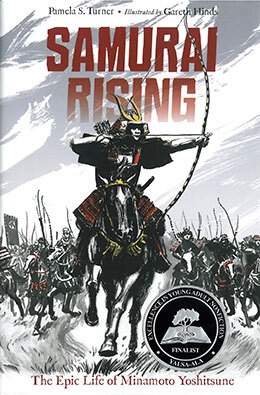 Where do you write most often?
Where do you write most often? 

Pamela S. Turner
Home Facebook Instagram TwitterSign up for Pam’s occasional newsletter.
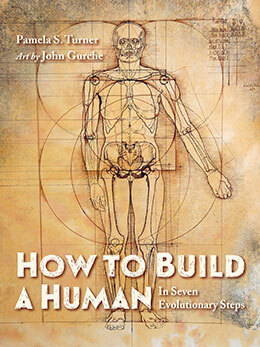
Pamela’s most recent nonfiction book, How to Build a Human in Seven Evolutionary Steps
June 20, 2023
Summer Blog Series: Gary D. Schmidt
From Avi: As I did last summer, I’ve invited 13 admired middle grade authors to write for my blog for the next three months. I hope you’ll tune in each Tuesday to see who has answered these three questions. You should have a list of terrific books to read and share and read aloud by the end of the summer … along with new authors to follow!
Your favorite book on writing:My favorite book on writing is E. M. Forster’s Aspects of the Novel. It’s old—1927—and it’s not a how-to book at all. (For the craft-style book, I like Ben Yagoda’s The Sound on the Page.) But Forster is smart about the role of the writer, the point of view, the notion that the writer’s first task is to get the reader to want to turn the page. The examples are incredibly dated, obviously, but the ideas are fantastic.
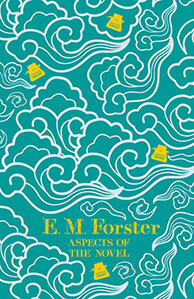
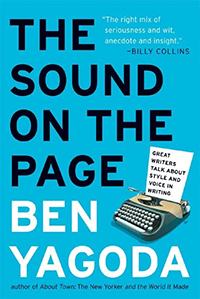 Reading aloud from my books:
Reading aloud from my books: I believe you and your listeners will enjoy So Tall Within: Sojourner Truth Long Walk Toward Freedom, illustrated by Daniel Minter.
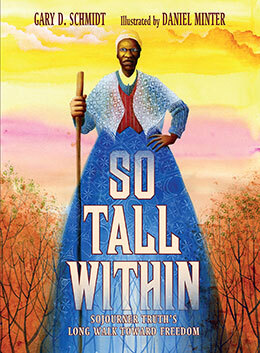 Where do you write most often?
Where do you write most often? 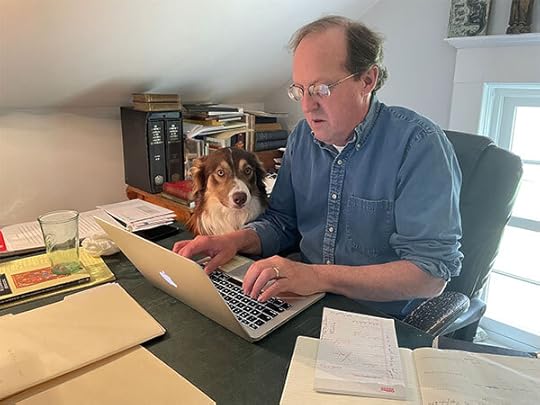
The top photo is where I write in the wintertime; it’s inside the house. The bottom photo—where I did clean up the desk more than a bit—is the outside study, where I write in the summertime. You can tell which one the dog prefers.
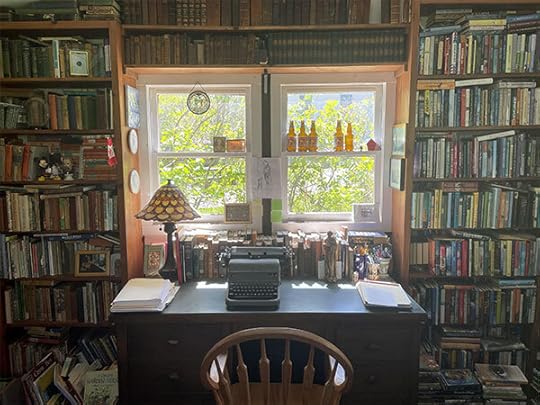
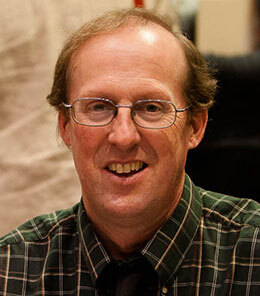
Gary D. Schmidt
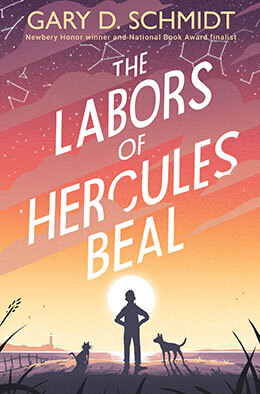
Gary’s most recent book, published in May 2023
June 13, 2023
Summer Blog Series: Torrey Maldonado
From Avi: As I did last summer, I’ve invited 13 admired middle grade authors to write for my blog for the next three months. I hope you’ll tune in each Tuesday to see who has answered these three questions. You should have a list of terrific books to read and share and read aloud by the end of the summer … along with new authors to follow!
Your favorite book on writing:Through the lens of movies and TV shows is how I relate to the written word because I’m from a world on the other side of the tracks where most people by middle school quit reading books, and we turn to a lifetime of getting great storytelling cinematically. Life Magazine called my Red Hook projects in Brooklyn, NY “One of the Worst U.S. neighborhoods” and the high school dropout rate is over sixty percent, so by second grade I stopped reading.
As a boy, I didn’t hate books, but, like those around me, we felt books hated us since we did not see us in the written word. If we were in books, we weren’t main characters, complex, amazing, and worthy of respect. That turned us off to books and onto TV and movies.
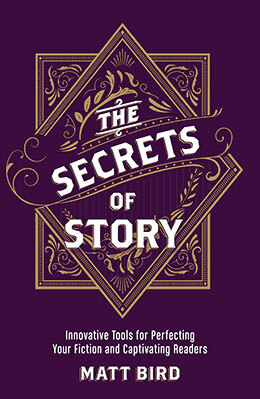
My mother kept giving me books saying “This is like that show you watch” or “This is like that movie we saw” and that tiny reading-flame in me grew into my passion to try and write books how some of the best TV shows and movies did—storytelling done right while righting wrongs of exclusionary, dehumanizing books.
So, years later, when I was at a Brooklyn house party for writers and met a guy who was writing a book about what works in TV and movies to help writers write better, I couldn’t wait to read it. And Matt Bird’s The Secrets of Story has since become my favorite book on writing. Through his examples from movies and TV, readers see where to lift writing of plot, character development, and more. Readers across our globe say my books “better become movies” (also the recent words of sixth, seventh, and eighth graders whose school I visited) and it’s The Secrets of Story that helps my books be that to readers. Bird’s book overflows with visual media references to make writing more dynamic.
Reading aloud from my books:ABBA has a song called “Take a Chance on Me” and I’m honored that Nancy Paulsen Books/ Penguin Random House took a chance on me and let me narrate three of my audiobooks—Tight, What Lane?, and Hands.
I just returned from a Hands tour where kids in different states hotly debated which book of mine is their favorite to read aloud. However, there is no debate amongst educators—educators decidedly start with read-alouds of my books because they find it sparks everyone to read.
I stay shocked from author-visits when students stop me as I start reading to ask, “Can I read it out loud?” Some students even argue over who’ll get to read!

The School Library Journal and other publications have written about how my books are used as a “One School, One Book Read” across our nation in schools where all grades and faculty unite to read one book. That usually culminates with schools having me visit to read aloud and meet their school. I love all of this feedback and these visits.
While my most recent book, Hands, is not composed in poetic stanzas, the book is praised as poetry and used by schools during Poetry Month. Adam Gidwitz, Newbery Honor-winning author, says, “Hands is a poetic page-turner.” Bookpage says, “Hands is narrated in a poetic, stream-of-consciousness style.” Hands had to be poetic because it revolves around boxing which is “poetry in motion” with rhythm, pace, and explosiveness. So I hoped Hands could be on par with how a boxer-poet in Hands—Muhammad Ali—would recite his poetry.
That said, I find myself toe-tapping and nodding to many read-alouds of my books done by kids. It adds to that awesomeness when adults tell me during or after a kid’s read-aloud, “You got a kid who hates to read to not just read but read aloud in front of an audience.” Who knows? Maybe someday we will read these students’ books. That’s my hope as a teacher and a writer—create, inspire, and build future storytellers.
Where do you write most often?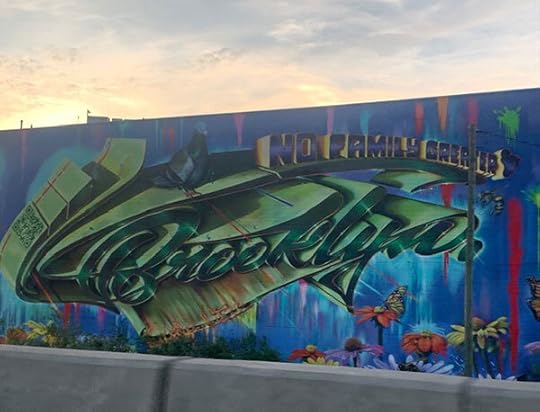
I write wherever and whenever I can. Maybe it’s because I didn’t have the same uninterrupted place to write as a boy? I do most of my writing in Brooklyn and it’s the one place in my heart that I most write from. Dorothy in The Wizard of Oz says, “There is no place like home” and the music group TLC sings, “Please stick to the rivers and the lakes that you’re used to.” Sticking to Brooklyn is a wellspring for my book ideas.
 Instagram Twitter Home
Instagram Twitter Home 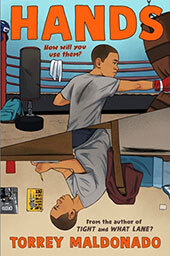
Torrey’s most recent book, published in 2023
Avi's Blog
- Avi's profile
- 1703 followers



